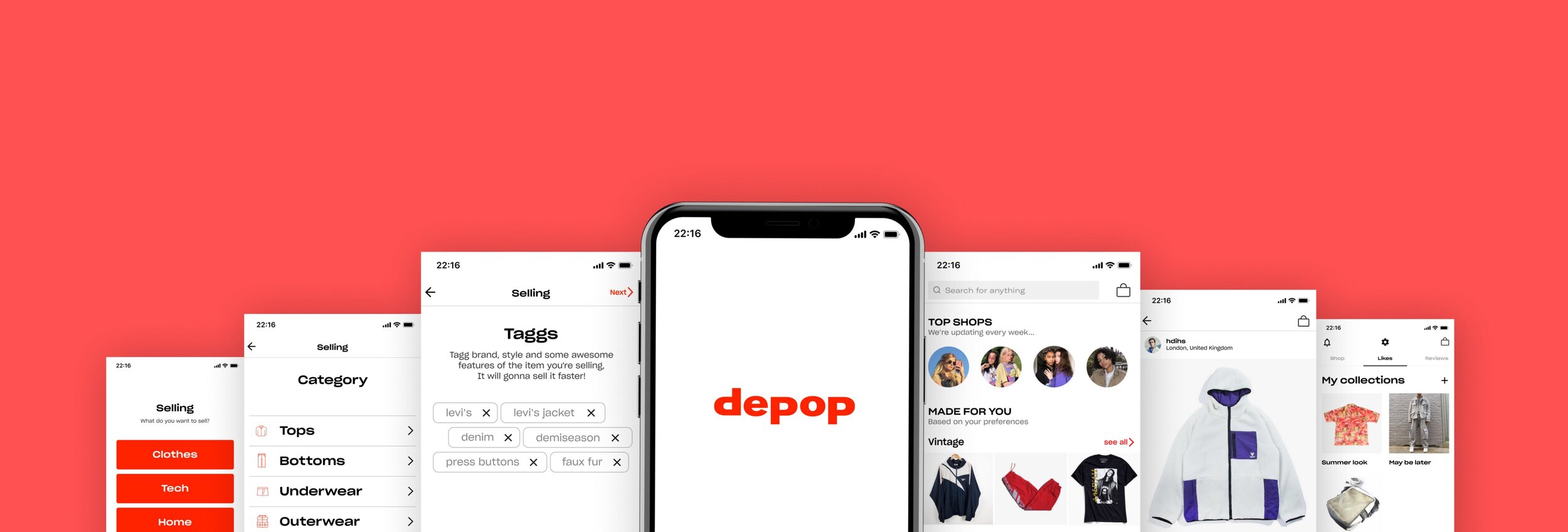Mixed Up Money
START TRACKING YOUR SPEND
Get to know where you spend, how it makes you feel and what really matters when it comes to your money!
Grab your freebie!
Blog Categories
Let's stop pretending that being good at money means you need to be good at math. Instead, let's listen to our body and our mind.
Hi, I'm Alyssa Davies

people are now consuming 4x the amount of clothing they did 20 years ago
Over the last few years, I have made a conscious effort to change my shopping habits. While at university, I followed the latest trends, and each clubbing outfit had a short expiration date. There was an unspoken rule that you couldn’t wear the same thing out multiple times. I had dozens of cheap crop tops from fast fashion shops like Urban Planet, Forever 21, and H&M. They were terrible for my wallet, the environment, and they would completely fall apart after a few washes.
After leaving university, I realized I had so few clothes that I liked. The problem? I wasn’t prioritizing timeless quality pieces for my wardrobe. I decided to start sticking to basics that I knew would last me years and cut my shopping trips down from monthly to quarterly. Because I was now buying more upscale items, my overall shopping expenditure remained the same.
What is the environmental and social impact of fast fashion?
At this time, I started learning about the detrimental effects of fast fashion retail on worker’s rights and the environment. I remember watching a news segment that showed mountains upon mountains of clothes flooding villages overseas. Was this where my clothes were going? Even the ones that I donated to charity? Apparently, yes. Many clothes go unwanted even at donation centres and end up in landfills across borders.
Some staggering stats about the industry are that it consumes the second-largest amount of water and produces 1/10th of the world’s carbon emissions. This is equal to the entirety of the European Union!
Fast fashion pollutes our lands and water resources – 50 billion bottles worth of plastic are dumped into the ocean each year by simply WASHING our clothes.
In addition to environmental destruction, the fast fashion industry poses human rights issues, as 80% of the industry is fuelled by young women’s labour in developing countries. These women have poor wages and working conditions, and by supporting the industry, you’re supporting this devastating cycle.
Global change to the industry is needed, as people are now consuming 4x the amount of clothing they did 20 years ago. A possible solution? Resale apps.
Resale apps are disrupting the industry by creating a similar online shopping experience for consumers at a lower price tag while eliminating the environmental and social consequences.
What is the resale marketplace like?
While vintage and second-hand clothing stores have been around for years, the introduction of resale apps has catapulted the industry and made second-hand shopping as accessible as ever, especially with online shopping being the only option during parts of the pandemic.
Typically a younger audience, these apps provide a place for buyers and sellers to congregate, clear some space in their closet, and find a good deal on their favourite brands. The apps tend to be easier to navigate on your mobile device, specialize in clothing, and are more aesthetically pleasing than traditional buy-and-sell websites like eBay or Kijiji.
Some apps, like Depop, also feature shop pages of your favourite influencers to get style inspiration or shop their closet. Other popular sites that I will be detailing and reviewing below include Poshmark and ThredUp.
If you’re looking to up your fashion game this summer while staying wallet-conscious, you may want to check them out. As someone who hasn’t ventured too far into the resale space but is highly interested, here is my first impressions.
My review of resale apps (available to Canadians)
#1. Depop

Depop is a colossal hit among Gen Z as 90% of its audience is under 25. Although it’s a U.K founded company, it’s grown in popularity among Canadians with 250,000 active users. Although there is a desktop version, Depop is explicitly made for mobile and is a cross between a shopping app and social media platform. It closely mirrors Instagram with seller’s profiles functioning as their storefront, displayed follower counts, and even an explore page.
What makes Depop unique is the increased usage of the app by social media influencers. PR packages and the unofficial rule that you can only wear outfits for a single post means that these influencers have closets full of clothes that they want to ditch. Depop allows them to create another form of income. Some of my favourite fashion-forward influencers have shops, including Emma Chamberlain, Grace Beverley, and Paige Lorenze.
The app is free to download for users, and the buyer and seller can negotiate shipping costs depending on where both parties live. Additionally, sellers pay Depop a 10% commission whenever they sell something.
First impressions:
I really like the app. When you first start, it will ask you to create a profile, provide details about your sizing, and track your location. Based on these details, the app filters items for you, making it easier to find your size and save on shipping by finding sellers in your area.
You can search for specific profiles, brands, or descriptions of clothing. It’s not too overwhelming like other resale apps I’ve experienced. You can find reasonable prices and items at a discount, but it will depend on the particular seller. Again, since Gen Z heavily uses the app, those are the brands that are more prominently featured, like Adidas, Champion, and Brandy Melville. I will be returning to shop for a few new summer pieces.
#2. Poshmark

Poshmark is a U.S.-based resale app available to Canadians as of 2019, although it’s been around for a decade. It’s another company trying to make a seamless merge between social media and shopping platforms. Like Depop, users can create profiles and follow, like, and share other users’ content. In addition to womenswear, Poshmark also features menswear, children, and homeware.
Another social feature from Poshmark is their “Posh Parties” that happen daily with different themes. Themes can include specific brands, styles, or clothing items, and users can socialize with each other while trading items related to the theme of the day.
Poshmark prices are more easily negotiable for buyers, but they charge a larger commission to sellers than Depop. The cost is $2.95 for every item sold under $15 and 20% for every item sold above $15.
Although they don’t have the same influencer backing, I was surprised by this list of celebrities with Poshmark pages, including Ashton Kutcher, DJ Khaled, and Serena Williams.
First impressions:
Poshmark is undoubtedly not as aesthetically pleasing or geared to the same younger audience. It seems to be the tale of two generations, Poshmark toward millennials and Depop being primarily for Gen Z. Both seem to have similar functionality and social features. I was able to filter for my size and location and follow pages that I liked.
As someone who is moving soon, I also made sure to check out their home décor section. Compared to Depop, which focuses on fashion and trends, Poshmark gives me a similar vibe to Facebook Marketplace. You won’t find your favourite new vintage piece or designer item, but you may find some great basic clothes for your kids or a cute workout outfit.
#3. ThredUp

ThredUp is another U.S.-based consignment app available to Canadians. It operates differently from Poshmark or Depop and has a similar model to a traditional consignment shop. Instead of sending individual clothes directly to buyers when you make a sale, you send a bundle of clothes through ThredUp’s free “Clean Up Kit.” By doing this, you essentially eliminate the hassle of communicating with buyers, posting pictures of the items, and coming up with prices.
ThredUp does take a cut of your profits for this service, more so compared to Poshmark or Depop. Below is the breakdown. Note that Canadians cannot sell to ThredUp but can purchase through their app, as they ship to Canada.
As a buyer, you have the benefit of seeing professional photos of all of the clothes and an entire team backing their quality, so you’re less likely to receive an item with an unknown stain or rip that the seller did not disclose.
First impressions:
My first impression of the site is that it’s fun and colourful. It doesn’t resemble a social platform like Depop or Poshmark and resembles a traditional store app like shopping online at Aritzia or the Gap. The brands are similar to those sold on Depop and Poshmark.
I noticed that the site offers many different sales and promotions, for example, 50% off your first purchase, 60% off for Memorial Day, etc. In comparison, Depop advertises its unique styles as opposed to prices. If you’re looking to make the switch to save money, ThredUp may be the shopping site for you.
Is resale going mainstream?
It’s truly amazing to see the early adoption of sustainable alternatives by younger generations. This movement has gone mainstream, with the world’s largest retail brands making changes to become more socially conscious. Lululemon made headlines recently when they said they would test out a new resale program in the next few months where customers would be able to trade in their Lulus for a gift card. Other companies that have started resale programs are Nike and Levi.
It’s certainly not about transitioning to second-hand in a day. But, if everyone started using a resale app and made minor changes to their shopping habits, it could significantly impact the environment — and your financial life.
Oh no, you missed the live webinar! But, good news: Mixed Up Money is pleased to share a resource for anyone planning for a future child or family.
financially preparing for baby
Mixed Up Money is pleased to share a free resource for anyone looking to cut back on non-essential spending. My most-requested product is these monthly calendars to share on your Instagram story, use as a phone background, or print off to track your spending habits.